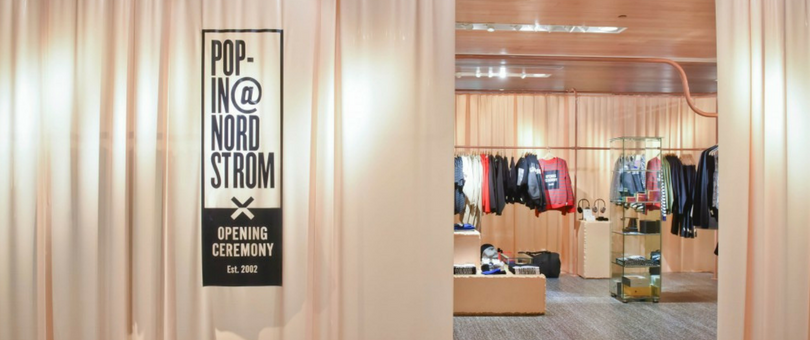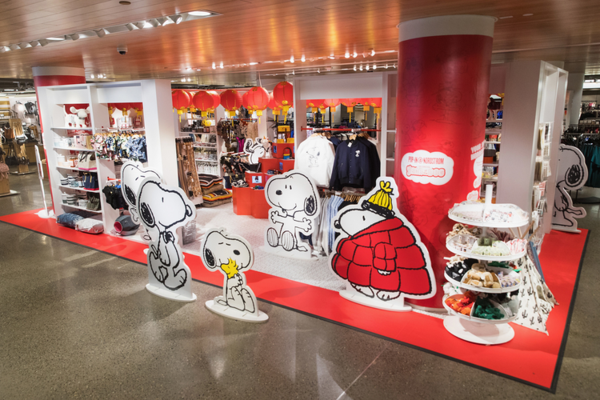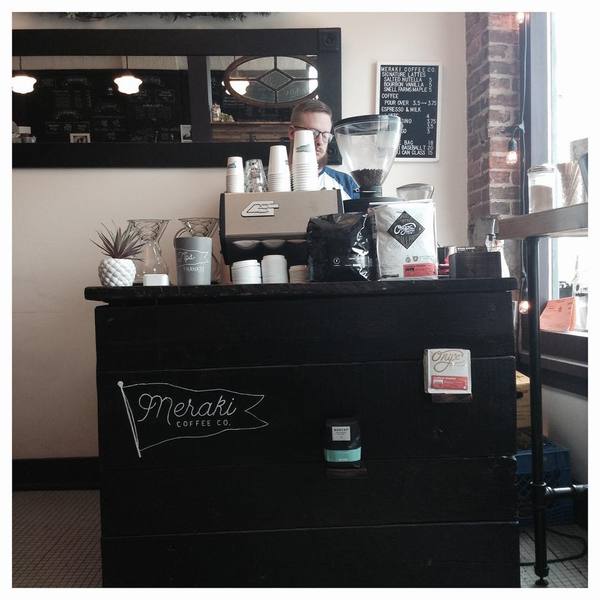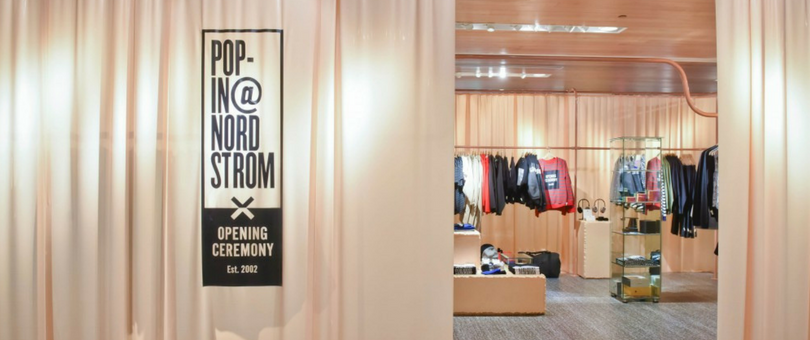
A lot goes into starting and running your own retail store. Going all-in on a location, estimating expenses like utilities, decorating the space… it’s a big commitment. And with rent prices rising in many cities around the globe, it’s a costly commitment, too.
That’s part of the reason so many small businesses are turning to other options like food trucks and temporary pop-up shops. Pop-up shops have grown in popularity in the last several years, and they’re particularly popular with ecommerce brands looking to dip their toes into physical retail.
The pop-in store is another one of these options.
What Is a Pop-In Store?

Simply put, a pop-in shop is a store that’s inside another store. To open one, you typically rent a small piece of an established retail store or boutique. Once you have an agreement in place, you can decorate and furnish the pop-in to make the space your own — just as you would with a pop-up shop or longer term brick-and-mortar store.
How Is a Pop-In Store Different From a Pop-Up?
If all of that sounds really similar to a pop-up shop, that’s because it is. The chief difference is that your store exists within another store. It’s a small distinction, but it can make a big difference for your retail brand.
For one, opening your store inside of an established retail location means you have a built-in marketing partner. You both benefit from driving foot traffic and getting customers to come in and stay awhile.
Selling out of an existing store also means you aren’t responsible for furnishing an entire space. Working with another retailer (instead of a landlord) typically offers more flexibility when it comes to leasing terms and a lower rental cost. That means your pop-in can open seasonally or for brief periods to promote sales or new launches.
Without the high cost of short-term rent, utilities, and other expenses, it’s more affordable to keep the shop open for a longer period of time.
Benefits of Pop-In Shops: Why Do They Work?
Pop-in stores have the potential to drive real success for both the pop-in shop itself and the retail store owner. That’s why it’s a growing trend in the retail space. So much so that department store Nordstrom even created an ongoing pop-in program — Pop-In@Nordstrom — at nine of their locations in the U.S. and Canada. Let’s look at a few of the benefits Nordstrom’s new pop-in partners can bet on.
Reach a New Audience
Speaking of your host’s marketing efforts, opening your store inside another retailer immediately provides your business with a targeted, engaged new audience. By choosing your host wisely (more on that later), you can ensure your pop-in store’s built-in audience expands your reach and leads to meaningful new customer relationships.
Brick-and-Mortar Customer Engagement
Shopping online is easier and more convenient than ever before. And with the growing popularity of free and fast shipping, more and more commerce is becoming ecommerce. That means customers who frequent brick-and-mortar retail stores have the opportunity to immerse themselves in your brand than their digital counterparts. A pop-in doesn’t just give you access to your host’s audience — it serves up the most engaged segment of it.
Capitalize on Existing Foot Traffic
Whether you open a pop-in inside a large retailer like Nordstrom or a small, local boutique, you have a head start when it comes to foot traffic. Pop-up shops and traditional brick-and-mortar stores are responsible for drumming up foot traffic basically from scratch. When you pop-in, that foot traffic is already rolling in, thanks to your host’s marketing efforts.
FURTHER READING: Get more customers into your store with these online promotion tactics.
Test Out the Retail Experience Without the Commitment
There’s a lot of talk out there about the fate of retail as ecommerce takes over the market. But for many ecommerce brands — even big online brands like Wayfair — brick-and-mortar stores can be a huge benefit for customers.
If you’re running a booming ecommerce business, you might be eyeing a physical retail space as a way to try out multichannel retail. Opening a pop-in shop can help you test the waters of brick-and-mortar retail. That way you can ensure your store’s success before committing to a lengthy business lease.
Opening a few pop-in stores throughout your area can help you find the best location for a store, too.
Diversify Your Reach
With a pop-in shop, you have the flexibility and cost savings to pop into not just in one store, but several, throughout your area. That means you can both grow and diversify your customer base. Another benefit is that you can strategically test the waters in each location to see if it makes sense to open a permanent brick-and-mortar location there.
Take Advantage of Seasonality
Seasonal businesses face all kinds of challenges that standard retailers don’t. By opening a temporary pop-in shop, you have the freedom to master seasonal swings and events and leverage them to boost sales.
Have a popular swim line? Add an early summer pop-in shop to your marketing strategy. Is there a big festival happening downtown? Plan a pop-in store for the week.
FURTHER READING: Learn more about why you should consider hosting a holiday pop-up shop.
Tips for a Successful Pop-In Store
Now that we’ve sold you on opening a pop-in store, let’s talk about making sure your pop-in is a success. We could go on all day about ensuring your store’s triumph, but let’s start with the four biggest and most vital tips for your pop-in shop.
Choose the Right Retailer to Partner With
You can put all of your efforts into building a pop-in shop, creating displays, and making your space stand out — but if your host’s brand isn’t the right fit, you likely won’t see products flying off the shelf. That’s why choosing the right brand to partner with is the number one most important factor in creating a pop-in store. A few things to consider when looking at your options:
- Brand fit: Does your host’s branding complement your business? Do your values, and the values of your customers, align? If building environmentally sustainable products is a central part of your brand, look for a host that’s also committed to that goal.
- Audience compatibility: Do the same people buy your products and your host’s? If your customers are all between 20-30 years old, and your host primarily serves the 65+ crowd, it’s not a good fit.
- Audience stretch: One caveat to the tip above is that a mismatched audience can work to your advantage when used strategically to diversify your customer base or test out a new market. If you’re looking to stretch your brand into a new segment, the brand fit piece becomes even more key.
Find the Best Location

Once you have a list of compatible brands to host you, narrow down your list based on location. The right location depends on a lot of factors including who your customers are, where they live, hang out, and how they get around.
You want to make it easy for the right customers to get to you, and you also want to choose a location that will help your audience grow. That means a location with ample foot traffic will produce the best results for your business. You should also consider locations where the flow of foot traffic varies with the seasons. For example, the boardwalk is bustling in August, but if you sell winter hats, it’s probably not the best location for your pop-in store.
Another thing to consider is parking and accessibility. If your customers drive everywhere, you’ll need a location with plenty of parking. If they take public transportation, you’ll want a location that’s close to bus and subway stops.
Create a Sense of Urgency and Exclusivity
One of the reasons non-traditional retail setups like pop-up and pop-in stores are so effective is their ephemerality. They only exist (in a particular location or at all) for a fleeting period of time. Only a certain number of people will be able to shop there, and that lends pop-in shops a sense of exclusivity. They’re a novelty.
To make the most of your limited run, your marketing should really emphasize the urgency and exclusivity of your pop-in store. Consider running a temporary sale for those who buy in person (versus online) to add to the exclusivity, and make a point of publicizing how long your pop-in will be open.
Make It an Experience
As large retailers scramble for a way to give in-store shopping its own unique value proposition, many of them are working to turn brick-and-mortar shopping into an immersive experience. If you’re taking an ecommerce brand into the retail habitat, you have an opportunity to create a completely new experience for customers shopping with you.
Decorate your new pop-in store to the nines and make the space feel like your brand. Just because it’s a temporary investment, doesn’t mean you shouldn’t go all in. Consider hosting an event that encourages customers to stop and stay awhile.
FURTHER READING: Read more about how to create a cohesive customer experience for customers shopping online and in-store.
Is a Pop-In Store Right for Your Business?
Pop-in stores — like any other sales channel — aren’t for everyone. Some brands thrive online and stagnate in a physical retail space. Some products are too large or complicated to lend themselves to a pop-in installation.
But a pop-in can be a powerful tool to reach new customers and grow sales. That’s why it’s worth looking into opening a pop-in store if you’re:
- Considering opening a brick-and-mortar store of your own,
- Trying to break into a new local market, or
- Wanting to tap into an established and engaged segment.
Have you tried a pop-in store? What was your experience? Share your thoughts in the comments below.

